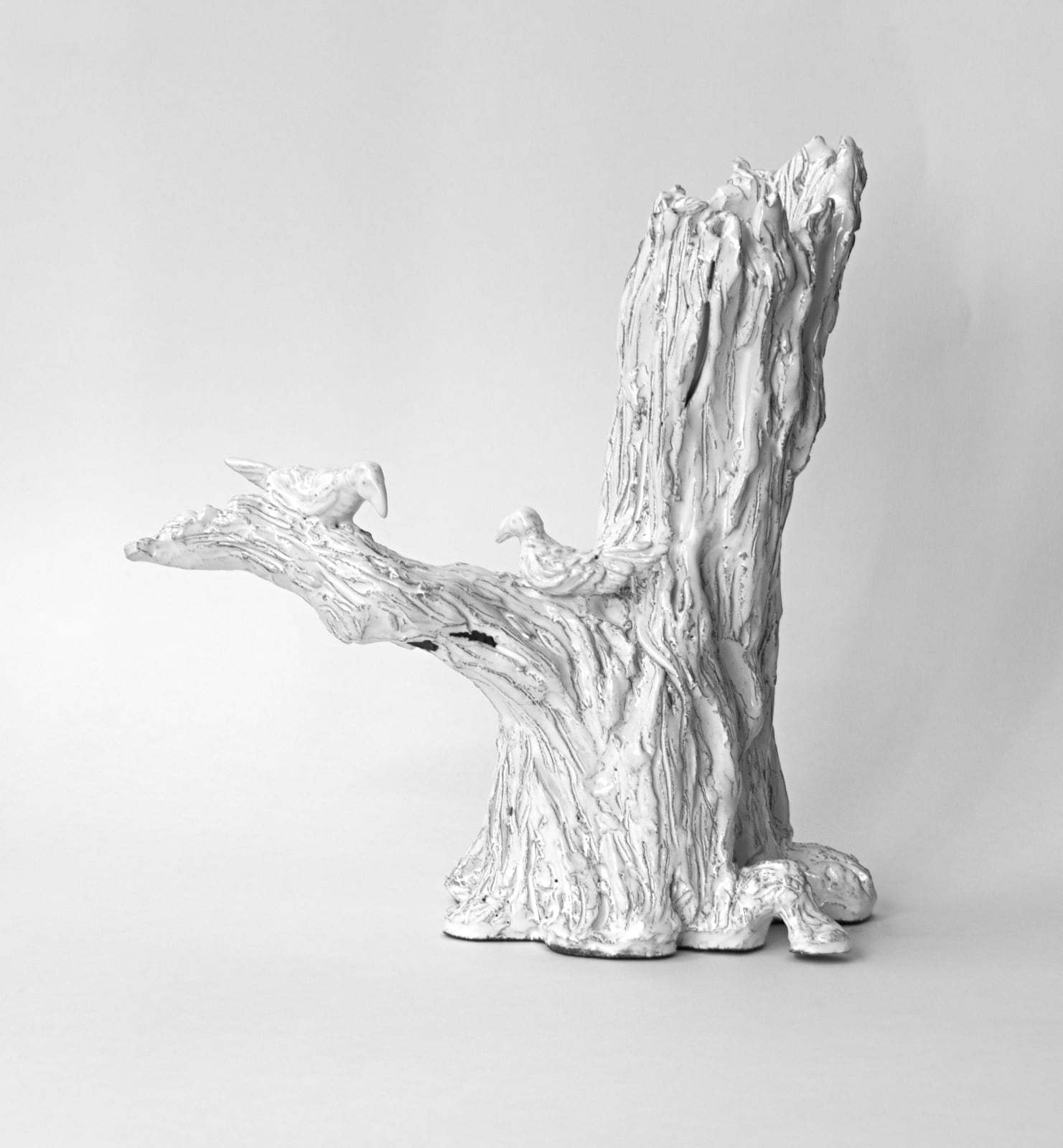



Setsuko Klossowska de Rola
Dans la Forêt 4, 2021
Black clay, white glaze
30 x 18 x 30 cm, 3.4 kg
Copyright The Artist
Further images
Setsuko Klossowska de Rola (b. 1943) is a Japanese artist who has been living and working France and Switzerland since the 1970. The artist’s ceramics are produced in collaboration with...
Setsuko Klossowska de Rola (b. 1943) is a Japanese artist who has been living and working France and Switzerland since the 1970. The artist’s ceramics are produced in collaboration with Astier de Villatte, a Parisian-based artisanal workshop praised for its milky-white ceramics. The ongoing artistic collaboration stems from the relationship between the artist and Benoît Astier de Villatte, who, as a child, lived with his parents at the French Academy in Rome, Villa Medici, where Setsuko’s husband, Balthazar Klossowski de Rola (Balthus), served as director from 1961 to 1977.
Setsuko’s terra-cotta works evince a deep familiarity with the natural world. Her hollow tree trunks and branches, either glazed with milky white enamel or left in earthly brown – reveal their own life cycles, the fragmented, gnarled forms suggesting long histories of environmental change. Yet, in many cases, these worn, warped remains support new life, with fresh young leaves and berries, and poised birds announcing revival and vigor. Setsuko’s mark making responds to this fomenting energy, balancing expressive gashes and broad, shallow channels with meticulous, delicately wrought detail. In some cases the liberal application of white enamel amplifies these varying textures. Setsuko recalls that “In Japan, many traditional ceremonies take place in the forest and old trees are considered sacred. So, when I make a tree, I do it with gratitude. As I make it, I’m thanking it for letting me make it.”
Setsuko’s terra-cotta works evince a deep familiarity with the natural world. Her hollow tree trunks and branches, either glazed with milky white enamel or left in earthly brown – reveal their own life cycles, the fragmented, gnarled forms suggesting long histories of environmental change. Yet, in many cases, these worn, warped remains support new life, with fresh young leaves and berries, and poised birds announcing revival and vigor. Setsuko’s mark making responds to this fomenting energy, balancing expressive gashes and broad, shallow channels with meticulous, delicately wrought detail. In some cases the liberal application of white enamel amplifies these varying textures. Setsuko recalls that “In Japan, many traditional ceremonies take place in the forest and old trees are considered sacred. So, when I make a tree, I do it with gratitude. As I make it, I’m thanking it for letting me make it.”
Provenance
Artist's Studio1
of
31








